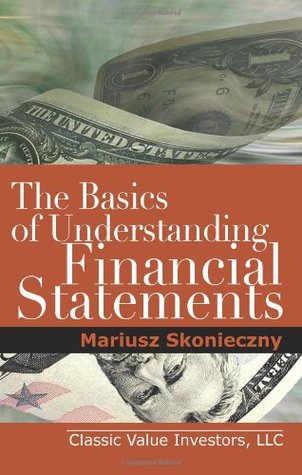Contents
Net present value is the difference between the present value of cash inflows and the present value of cash outflows over a period of time. Forward spread is the price difference between the spot price of a security and the forward price of the same security taken at a specified interval. Full BioSuzanne is a content marketer, writer, and fact-checker. She holds a Bachelor of Science in Finance degree from Bridgewater State University and helps develop content strategies for financial brands. Charles is a nationally recognized capital markets specialist and educator with over 30 years of experience developing in-depth training programs for burgeoning financial professionals.
An exporter wants a weak base currency so large negative forward points are an economic advantage. With an upward sloping interest rate yield curve forward points will be more negative the longer the time horizon. The reality, however, is that interest rates may very well shift when the investor rolls the first T-bill investment into the second.
- The slope of the yield curve provides an estimate of expected interest rate fluctuations in the future and the level of economic activity.
- It quickly became messy and hard to maintain when the data volume is large.
- This means that even if the value of dollars falls below the fixed forward rate of $1.4858 per euro, the exchange rate for the exporter will remain unchanged.
- Forward interest rate is the interest rate that an investor can fix at the present day for some future time period.
While the spot rate of interest for three years is 8.2% p.a and spot yield for five years is 10.4% p.a on zero-coupon bonds. However, an investor should not blindly follow these rates as these are based on mere calculations and assumptions. They are only futuristic predictions based upon past trends and other economic factors. They can often go wrong in case of time periods extending several years or periods. Hence, they should use these rates just as a basis for reference and exercise their own judgment while choosing between alternate investment options and scenarios.
Signup for On the Rocks, our treasury newsletter
Gordon Scott has been an active investor and technical analyst of securities, futures, forex, and penny stocks for 20+ years. He is a member of the Investopedia Financial Review Board and the co-author of Investing to Win. As the future investment of the second option is 3 years away.
In theory, a forward rate formula would equal the spot rate plus any money, such as dividends, earned by the security in question less any finance charges or other charges. A spot interest rate gives you the price of a financial contract on the spot date. The spot date is the day when capex in cash flow statement the funds involved in a business transaction are transferred between the parties involved. It could be two days after a trade, or even on the same day the deal is completed. A spot rate of 5% is the agreed-upon market price of the transaction based on current buyer and seller action.

However, the perception or belief of the investor may be that this current interest rate is likely to rise in the near future. In such a scenario, he may prefer to park his money for the short term at the current prevailing rate. And once the interest rates rise as per his predictions or belief, he would liquidate his current short-term investment. Note that both spot rates and forward rates are agreed to in the present.
However, in real life, the market is inefficient, and some friction forces such as transaction costs still exist. Although there is no way to go around it, understand this concept can help you to understand how a market SHOULD work. By reading this article, you will not only be able to understand what is forward rate and how to calculate forward rate, but you will also understand how to apply it in bond valuation.
Like it? Share with your friends!
Interest rates can also be adjusted by taking into account the predicted inflation. The second method is more appropriate for interest rate derivatives , whose implicit funding rates do offset perfectly. It is also commonly found in textbooks about bonds, but as I said it is an approximation. Depends on the rate calculation mode , which yields three different results.
The relationship between spot and forward rates is similar to the relationship between discounted present value and future value. A forward interest rate acts as a discount rate for a single payment from one future date and discounts it to a closer future date . Currency MarketFor those wishing to invest in currencies, the currency market is a one-stop solution. In the currency market different currencies are bought and sold by participants operating in various jurisdictions across the world. It is important in international trade and is also known as Forex or Foreign Exchange.
Through this contract, both parties enter into a contract and agree to fix a rate of interest in advance at a certain time ‘t’. A forward rate indicates the interest rate on a loan beginning at some time in the future, whereas a spot rate is the interest rate on a loan beginning immediately. Thus, the forward market rate is for future delivery after the usual settlement time in the cash market. In theory, forward rates are prices of financial transactions that are expected to take place at some future point. Exporters from countries with traditionally higher interest rate environments, such as New Zealand and Australia, benefit from the negative forward points, while it is a cost to importers.

The forward rate is calculated by taking the spot rate and adjusting it for interest rate differentials of the two currencies involved over the period of the contract. Forward rates are used in finance and involve contracts that will be completed later. Explore the definition and formula of forward rates and learn about forward interest rate and calculation, spot rate, and forward exchange rates. While a forward rate is merely a market’s expectations for future prices. It serves as an economic indicator, how may the market expect to perform in the future. Suppose an investor tries to determine what the yield will he obtain on a two-year investment made from three years from now.
Forward Rate Explained
Forward rates are used to calculate the future value of money. Let’s proceed with another example of a garment exporter to the euro region, who wants to hedge his proceeds in dollars against the euro currency and has the following details to find the forward rate. \(_\), the \(n\)-year spot rate, is a measure of the average interest rate over the period from now until \(n\) years’ time. Spot rates are also applied in determining the yield to maturity of a bond. The bid/ask spread of the FX and interest rate markets accounts for the 4 FX point balance. The example serves to provide a “back of the envelope” guide to calculating FX forward points and outright rates.
Now he has to select the better option from the two that will maximize his returns. Future value is the value of a current asset at a future date based on an assumed rate of growth over time. Suppose a hypothetical two-year bond is yielding 10%, while a one-year bond is yielding 8%.
It will be noticed that the margin between the bid and offer forward rates is higher than for the spot rate. In practice, this widening of margins can be used to determine whether a forward margin is a premium or discount. Therefore, it is normal for forward rates to be used by investors, who may believe they have knowledge or information on how the prices of specific items will move over time.
Let’s assume an exporter expects some part of the sales proceeds two months after the shipment. Because the proceeds might not be in dollars, the exporter would need to protect the proceeds from exchange rate fluctuations. It helps the exporter hedge against the exchange rate fluctuation risk and is one of the primary uses of a forward rate.
More From: International Finance
The forward rate agreement is an agreement that will allow you to make an investment at the current forward rate that will take place in the future. Government BondA government bond is an investment vehicle that allows investors to lend money to the government in return for a steady interest income. The forward rate refers to the rate that is used to discount a payment from a distant future date to a closer future date. It can also be seen as the bridging relationship between two future spot rates, i.e., further spot rate and closer spot rate.
Forward Interest Rate
A spot rate is used if the agreed trade occurs today or tomorrow. A forward rate is used if the agreed trade isn’t set to occur until later in the future. The forward yield is the interest rate paid on a bond in the future. On the other hand, the spot rate is the interest rate for future contracts that https://1investing.in/ must be settled and delivered immediately or on the same day. Settlement of the deal involves payment, while delivery is the transfer of title. Treasury BondA Treasury Bond (or T-bond) is a government debt security with a fixed rate of return and relatively low risk, as issued by the US government.
In other words, the value of a Derivative Contract is derived from the underlying asset on which the Contract is based. Forward Rate AgreementForward Rate Agreement or FRA is a contract between two entities wherein interest rate is fixed for the future. The purpose of such contracts is hedging against the fluctuating interest rates. The forex spot rate is the most commonly quoted forex rate in both the wholesale and retail market. But again, do keep in mind that the forward rate is merely an estimation in a perfectly efficient market with no friction.
In such a situation and to avoid or mitigate such risks, this forward interest rate comes handy. These rates give a cushion against such a possible fall in the rate in the future. If we have the spot rates, we can rearrange the above equation to calculate the one-year forward rate one year from now. Even though FRAs sound similar to futures contracts, there is a significant distinction between the two. While currency forwards can be customized to meet the individual needs of the parties involved in the transaction, futures cannot be tailored and have predetermined contract size and expiration dates. Interest RateAn interest rate formula is used to calculate loan repayment amounts as well as interest earned on fixed deposits, mutual funds, and other investments.
Therefore, 4.6% is the forward rate of interest that investor X should get at the maturity period of the first year to earn the same overall returns as bond A. MaturityMaturity value is the amount to be received on the due date or on the maturity of instrument/security that the investor holds over time. It is calculated by multiplying the principal amount to the compounding interest, further calculated by one plus rate of interest to the period’s power.
Forward Rate Calculator
If a potential investor believes that real future rates will be higher or lower than the stated forward rates at the present date, it could signal an investment opportunity. It provides a platform for sellers and buyers to interact and trade at a price determined by market forces. James Chen, CMT is an expert trader, investment adviser, and global market strategist. He has authored books on technical analysis and foreign exchange trading published by John Wiley and Sons and served as a guest expert on CNBC, BloombergTV, Forbes, and Reuters among other financial media.
